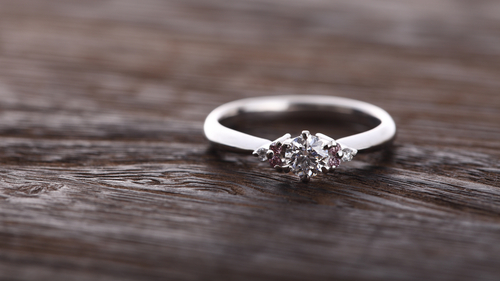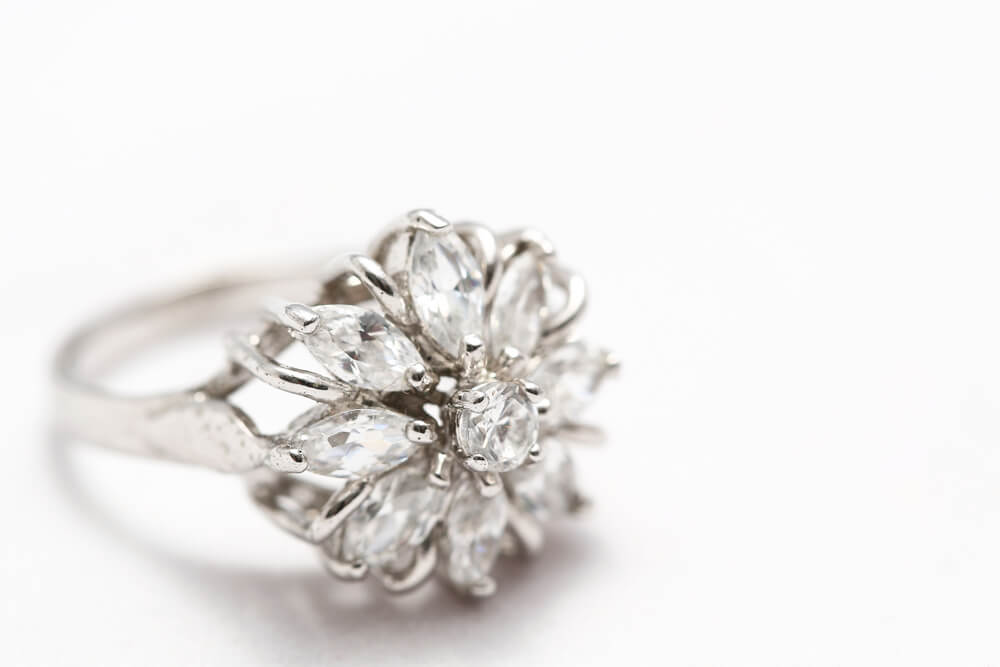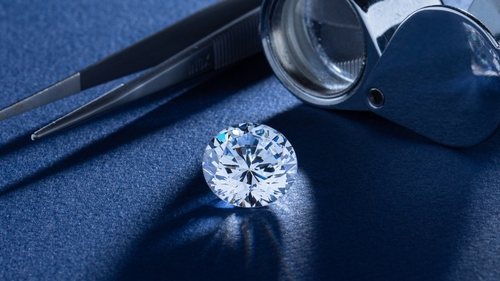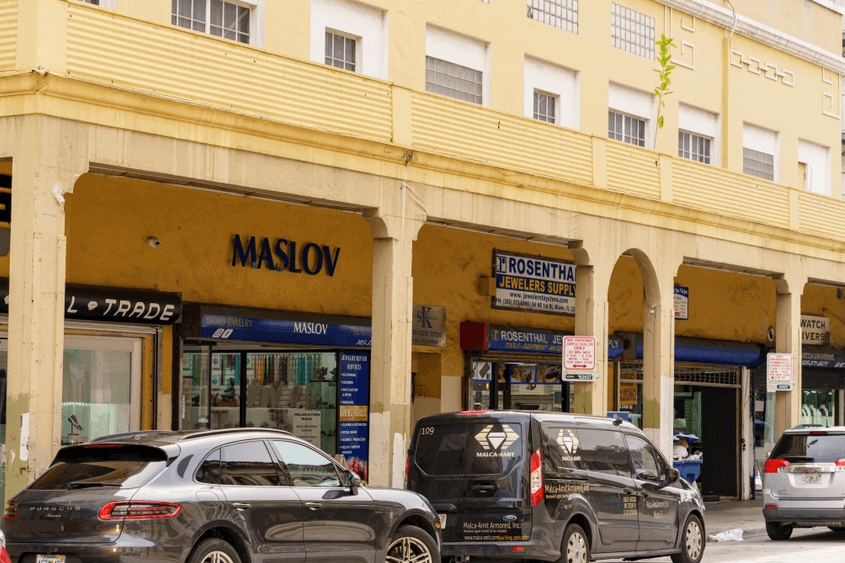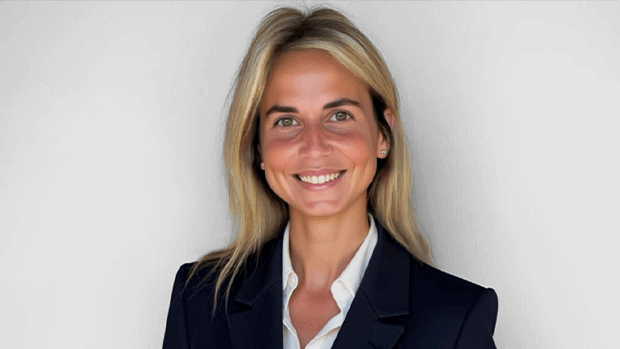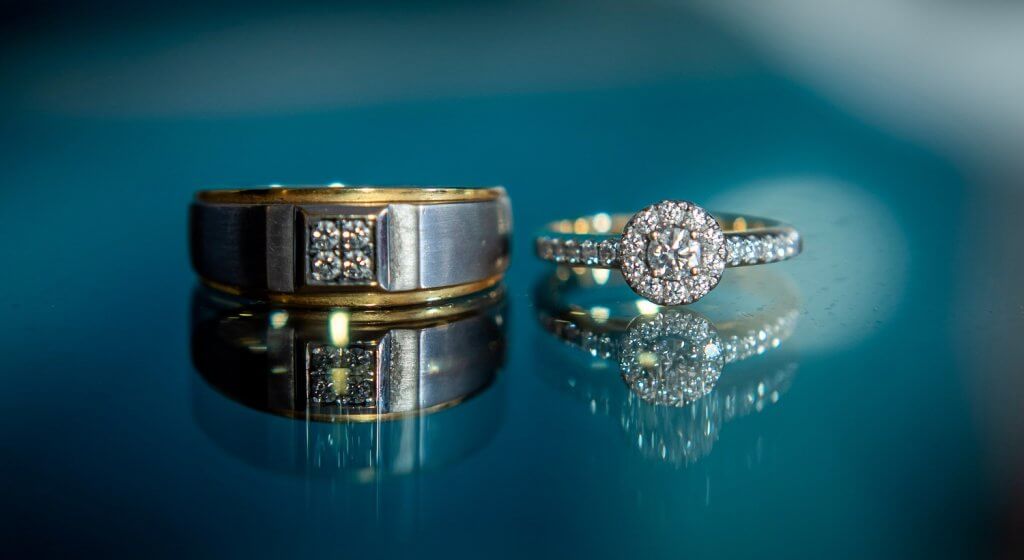Walmart Engagement Rings Reviewed: Deals or Disappointments?
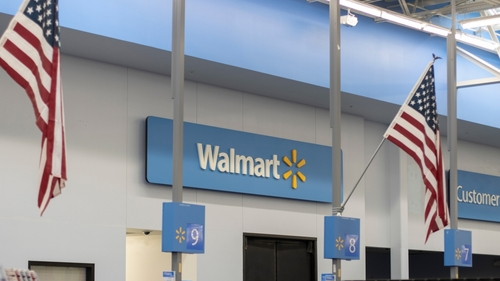
In this comprehensive review, we’ll explore:
- Let’s face it, there’s no way of making Walmart sound like a great place to get an engagement ring.
- In all likelihood, their biggest selling point stems from the fact that Walmart is a great place to go for a deal. For shoppers who don’t know the first thing about diamonds, the relatively low prices Walmart offers on their bridal jewelry will likely seem like a strong deal, and a good way to avoid the high prices attached to more luxury settings.
- Still, Walmart is lacking more than luxury. Vital elements like certification let the collection down, and the low prices are generally a result of cluster rings, which are created without any larger, more costly diamonds.
There’s no point in dillydallying or opening this review with a couple paragraphs of background. Everyone knows Walmart – and almost as many people have, at some point or another, happened upon Walmart’s jewelry section toward the back of the store and said to their shopping partner: “Walmart do engagement rings now?!”
It’s not snobbish or arrogant to be more than a little surprised, and to regard that part of the store with a fair dose of skepticism. Engagement rings are
But it’s not just that.
Engagement rings are one of the most important – if not the most important – things you will ever buy or give to another person. From the moment of the proposal to the decades that follow, they represent your love and commitment from the moment you hand over your money, and walk out of the store with that tiny box buried deep in your pocket until the perfect moment. Contrast that with the fact that most of us make countless trips into Walmart each year – we know the frozen food section like the backs of our hands, remember getting our middle school supplies there, and still get flashbacks to squeezing through the crowds with a 10lb butterball turkey in our arms last Thanksgiving – and, in all likelihood, regard it as one of the least romantic, least special, and least celebratory places we could go.
So, what makes anyone even consider Walmart for bridal jewelry? The promise of saving money on an infamously expensive purchase – and, we imagine, of getting the best deal possible, in the most convenient way possible.
Our thoughts:
The positives: If being able to pick up a pack of gum, a bag of tomatoes and a fresh pack of socks while you’re picking out an engagement ring, then we guess this is a positive.
The negatives: the quality, price, range, and certification of their real diamond rings is all lacking, and we cannot imagine finding a worthwhile purchase from Walmart’s range.
The Brand
Walmart started out as Wal-Mart Discount City in Rogers, Arkansas, following the success of Sam Walton’s Five and Dime over in Bentonville. The store opened in the summer of 1962, with the clear intention of bringing savings to Walton’s customers. It was built upon a business model that was, at the time, pretty novel – the idea of selling items at higher volumes for much thinner profit margins. The store remains a successful example of this model almost sixty years on.
There is, of course, a lot more to the Walmart story, but the stores themselves really need no introduction. From fresh produce to canned goods, beauty products to clothing, electronics, toys, books, and home décor, we’re pretty confident you know exactly what to expect when you walk through those sliding doors.
But we’re here to talk about what’s going on at their jewelry counter, and how a store famed for low prices on mid-range products fairs when it tries to compete with specialized jewelry stores on engagement rings, and bridal jewelry.
Their range is pretty extensive in terms of the quality of materials used, and, accordingly, price. In many ways, the impression we got from their product range overlapped with the impression we got from the range at Macy’s Department Store: that the lower cost, cheaper rings made a lot more sense, ultimately, than the high quality, higher priced rings. Why? Because the prices seem to be far more indicative of quality.
Think of it this way. Someone on a very restricted budget can pick up a moissanite and sterling silver piece for less than $200, and be under no illusions about the materials used, or the level of craftmanship behind the ring.
Then again, someone with a substantially larger budget (but not knowledge about diamonds or fine jewelry) could walk into a Walmart and drop thousands of dollars on a poor quality, uncertified diamond that very few reputable jewelers would even consider selling in the first place….
The Experience
While the experience of walking into a Walmart is pretty universal, most of us haven’t wandered all that close to the jewelry counter before. Even so, it probably won’t come as a shock when we say that Walmart doesn’t seem focused on trying to rival the level of service offered by engagement ring stores near you — although, as ever, the one benefit you get from a Walmart (aside from being able to pick up a carton of eggs while you’re there) is that you actually get to see the ring before you commit.
When you look at the type of rings they offer, however, the one benefit Walmart has over an online vendor like James Allen tends to go out the window.
What’s available in one store will naturally differ a lot from what’s available in another. So, since the bulk of their range is listed online, that’s where we’ve focused our attention.
If you search Walmart’s website, Moissanite, white sapphire, cubic zirconia, and diamond are all lumped together. Sometimes, this is made clear in the product description while, other times you’ve got to read pretty far down to find out what the center stone really is. While this is only true on a few of the rings we looked at (most likely a result of the different third-party brands Walmart lists alongside their own rings), it’s reminiscent of the way engagement rings are listed on sites like Amazon and eBay.
Walmart stocks a lot of different brands. Some, like JeenMata, seem to be predominantly focused on other gemstones like moissanite and aquamarine, while others do have a range of real diamond options. Pompeii3 was a brand we encountered a lot when looking at real diamonds, as well as Imperial Diamond.
Across the board, however, Walmart’s product listings always seem to be missing something. The worst ‘oversight’ relates to certification, and sets a low bar for the in-store experience. If the seller themselves refuses to pay any notice to the necessity of providing an independent diamond report, how can the sales associates in store offer any meaningful guidance to shoppers?
The Rings
If you’ve read our review of Macy’s, you’ll remember how a lot of the rings we looked at were cluster rings – or rings with a relatively high CTW, given the low weight of the center stone. This is an easy way of impressing shoppers who don’t know a lot about engagement rings, since the eye is met with an explosion of sparkle, a bulky ring, a high Carat Total Weight, and a comparatively low price. This is because the diamonds used in cluster rings are a lot cheaper than diamonds considered big enough to be used in, say, a traditional Solitaire engagement ring. They can also be a lot lower in quality, since it’s harder for the untrained eye to spot flaws in a stone with a minute surface area.
The majority of Imperial Diamond rings we looked at were bulky clusters, and there was no mention of certification from any independent diamond lab. Clarity was generally poor – around I1 – I3 – despite the fact that their prices weren’t bottom of the barrel.
Nevertheless, the trouble is not limited to melee diamonds, and the cluster rings they are used to create…
The Diamonds
This Pompeii3 solitaire ring features a single, 1 carat center stone of natural diamond:
As you can see, while it’s currently reduced, the original list price was $3,680.10.
If you’ve read our guide to the cost of a 1 carat diamond, then you’ll already sense your alarm bells ringing. A 1 carat, eye clean diamond ring (both the diamond and the setting) will generally fall between $7,000 and $10,000.
This diamond is listed as having a color grade of K-L, and a clarity rating of I2-I3. These ranges aren’t particularly helpful, as every grade influences a diamond’s market value and appearance, but worse still is the fact that no diamond lab is mentioned. In that case, it seems fair to presume it hasn’t been independently certified.
The trouble is, that means there’s a strong chance that the diamond’s quality is lower still than what’s listed. We only regard the GIA or AGS to be reliable choices for diamond grading reports, and worry that the inconsistent approaches of other labs will ultimately lead to a poor deal for the buyer.
Even if the grade was given by a reliable third-party lab, an I2 or I3 clarity 1 carat diamond will be impacted by visible inclusions, and we would never recommend shoppers choose a color grade that does not fall into the Colorless (D-F) or Near Colorless (G-J) range. Even more worryingly, a Cut grade is not given, meaning shoppers have no idea about the diamond’s light performance or symmetry.
As we mentioned above, we feel far more understanding toward Walmart’s non-diamond engagement rings – rings that often cost no more than around $500 and, often, significantly less – as they offer an alternative option for those whose budgets cannot stretch any further.
We cannot understand the appeal or value of rings featuring diamonds suffering from terrible quality – noticeable color, inclusions, and who-only-knows what level of Cut quality – when, at any price point, they represent a major waste of money.
FAQ
Still wondering if you can bag a good deal at Walmart’s jewelry counter? Here are your frequently asked questions, answered.
Are the rings from Walmart real?
Yes, some feature real diamonds, gold, and platinum. Others, however, feature diamond simulants, like cubic zirconia, white sapphire, and moissanite.
Keep in mind, however, that even a real diamond can be the victim of its own poor quality. Real diamonds can be noticeably flawed, feature an unappealing yellow tint, and lose all their sparkle to a low quality cut.
In other words, making a wise investment is about much, much more than making sure the diamond is real.
Also, keep in mind that, if it looks too good to be true, it probably is. Walmart is a reputable enough store to clearly state when a ring contains a non-diamond gemstone, like a CZ or moissanite, but, as we mentioned above, this is not always made obvious in the listing – instead, it can be found in the product description.
While Walmart is known for offering a range of strong deals on products, from electronics and toys to regular groceries, remember that all diamonds have a certain market value, and that Walmart will have to charge a certain amount just to break even on their diamonds. This means that, if you see a ring with a good size gemstone at its center, you’ll want to dig deeper into the description, because it’s probably not a real diamond.
Are Walmart diamonds cheap?
Yes, but they’re not good deals. It’s vital that shoppers understand the difference, in order to avoid making a misguided purchase.
The prices attached to Walmart’s diamond rings are lower than the prices shoppers will encounter in the window of a real jewelry store, but there is a reason for this. Many of the diamonds used in the rings listed on Walmart’s site are lacking in quality, small, and uncertified. This is where the savings come from.
The phrase ‘you get what you pay for’ has been exhausted over the years, but it still rings just as true. In the case of Walmart’s non-diamond rings, the notion of getting what you pay for is clean-cut. In the case of their diamond rings, however, it’s all too easy to imagine an unsavvy shopper feeling as though they’ve found a good deal.
Why? Because they’re used to Walmart being cheaper than other stores on a long list of products, and may not be aware of the inherent value held by diamond – or quite how much diamond quality can impact the value and beauty of a ring.
Our Summary
It’s hard to find any redeeming features in the diamond engagement rings on sale at Walmart. Even if we put aside our own feelings about walking into a superstore and purchasing the most important piece of jewelry you will ever buy while shoppers navigate their shopping carts around you, there are a number of issues with Walmart’s approach to diamond selling that we consider to be total dealbreakers.
For one thing, one of the main reasons the GIA is so highly regarded has to do with its standards. In general, the GIA is a lot harsher, meaning that, if you’re paying for VS2 clarity, you’re definitely getting VS2 clarity. Other labs are looser, so you could pay for VS2 clarity and actually wind up with a diamond that the GIA would have graded at SI1 or SI2. This is bad enough, but consider how vulnerable to overpaying you are when the diamond hasn’t been independently graded at all.
Even worse, how poor is the clarity going to be when the seller themselves are grading it at I3?
Whether you’re shopping from Walmart or anywhere else, it’s impossible to justify investing in a diamond that is not accompanied by an independent lab report – barring, perhaps, Tiffany & Co., who grade their own diamonds in house.
But Walmart is not Tiffany & Co. – it’s a store that has made its success selling high volumes for low prices. And, while plenty of products can be sold according to that business model to the benefit of the shoppers, as well as the seller, we can’t see a world in which fine jewelry and diamonds fit into that category.
Note:
The insights provided in this review are drawn from publicly available data, customer reviews, and expert analysis. Our goal is to offer a balanced perspective to help buyers make informed decisions.
This site is not affiliated with or endorsed by Walmart. All information is based on publicly available data and independent evaluations. Logos and trademarks belong to their respective owners and are used for informational purposes only.
Readers are encouraged to verify all details with the retailer directly before making a purchase.






